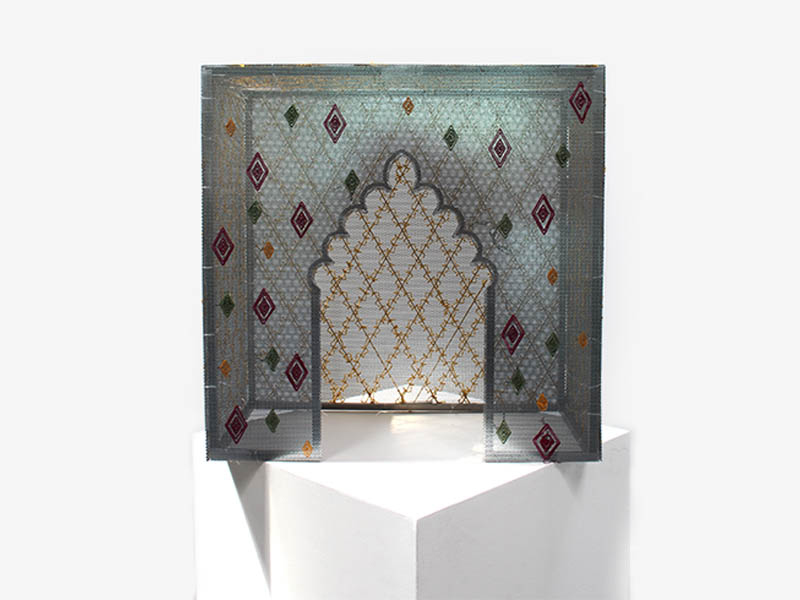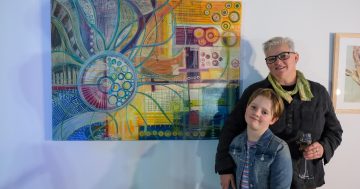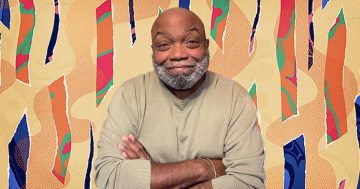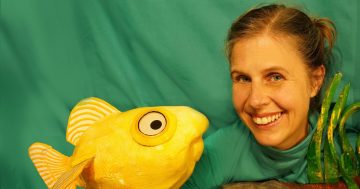
Amardeep Shergill with her family.
Tuggeranong Arts Centre is delighted to announce the opening of the exhibition for the 2017 EASS Award winner Amardeep Shergill.
Tuggeranong Arts Centre Gallery Program Manager, Narelle Phillips says the Arts Centre has been supporting graduating artists as a patron of the ANU School of Arts since 2013.
“Amardeep Shergill presented striking and vibrant work at the 2017 ANU grad show, and has spent the subsequent year creating and experimenting. Her investigations come from her unique perspective, occupying the liminal space positioned between cultures,” Phillips said.
Working across media, Amardeep used a traditional and culturally significant object as the starting point for her body of work – a hand embroidered Phulkari. She explores the notions of belonging, identity and liminality, from the position of existing in between cultures. Shergill’s artworks speak of mixed heritage, multiculturalism and moving forward with the past in our stride.

“This body of work was inspired by a story my grandmother told me three years ago. A story that gave me a renewed awareness of the value of one surviving phulkari handed down to me by my great-grandmother,” Shergill said.
“One day during the turbulent month of August 1947, Amar Singh [my Great-Grandfather] rides on a horseback towards his farm on the outskirts of Manaka village in Punjab. He carries with him the most valuable family possessions, wrapped in a bundle. He finds a secure spot in the middle of a field to hide the bundle which also contained hand embroidered Phulkaris by my great-grandmother Dhan Kaur.

“My Nani (grandmother) recalls that it rained that night and the bad weather continued for several days so all valuables were destroyed. The bundle of items were hidden away in case attackers or looters come to the village as the year of 1947 is an unforgettably painful historical event and the aftermath of this can still be felt today.
As my grandmother recited this story to me about three years ago, I came to realise that objects are another window into the stories of many lives and historical events. I became mindful of the value of one surviving phulkari which was handed down to me.”
Learning about her great-grandfather and the passage of valuable family possessions, wrapped and buried for safekeeping, Shergill traced back through familial history and connected with the domestic craft making skill of phulkari, which once was central to the identity of a Punjabi woman, to inform her new sculptural forms.
“So much of who we ‘believe’ ourselves to be is shaped by our environment and the past. Possessions are an opportunity to explore connections, stories, craft making skills and collective memories of a historical event which needs to be told and retold to gain new perspectives.

“It is not my attempt to reproduce the fine skills of this craft in its original form which requires years of practice, however, I am able to re-interpret the patterns and colours into new forms and materials that I enjoy working with,” Shergill said.
The Exhibition continues until Saturday 24 November.
















